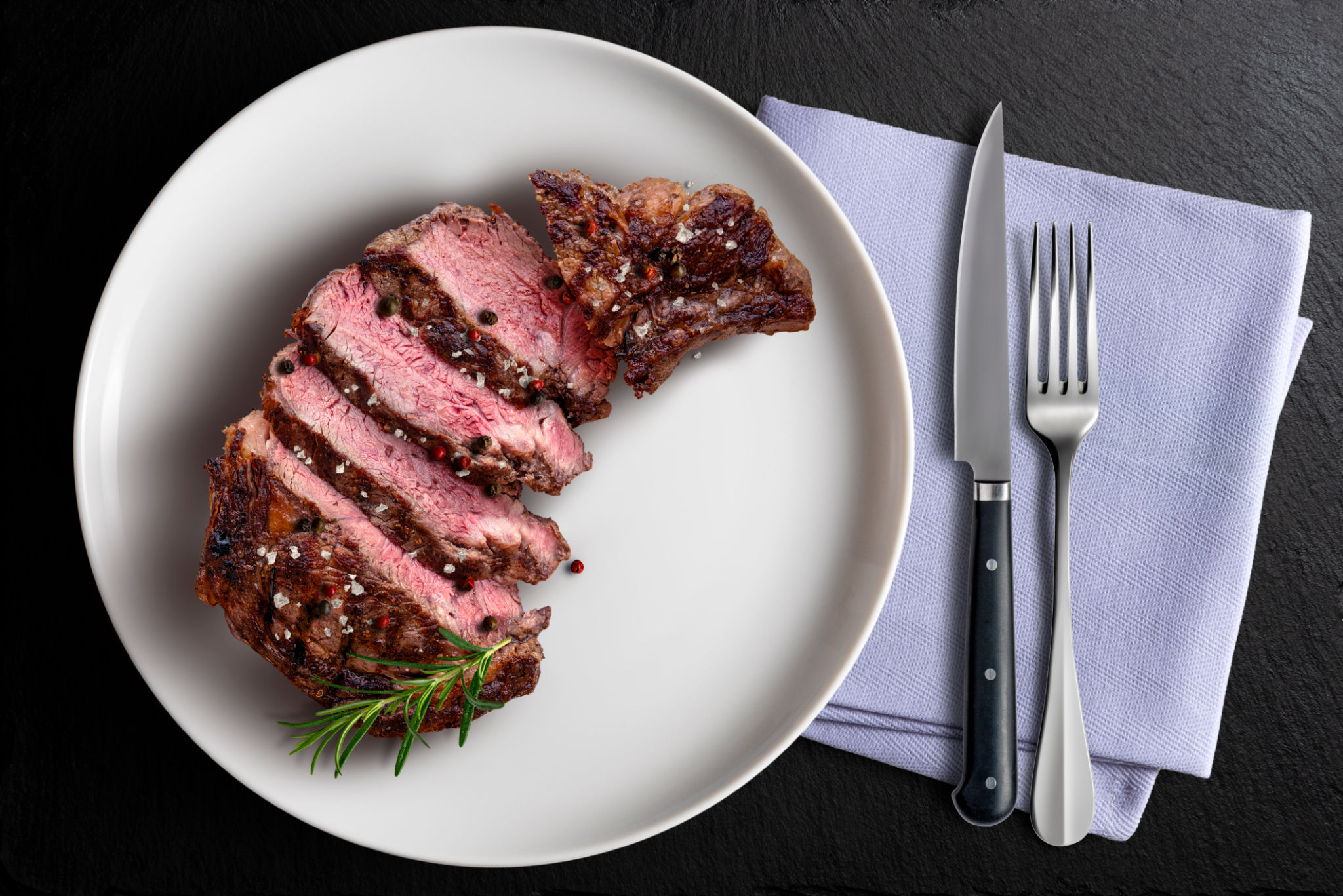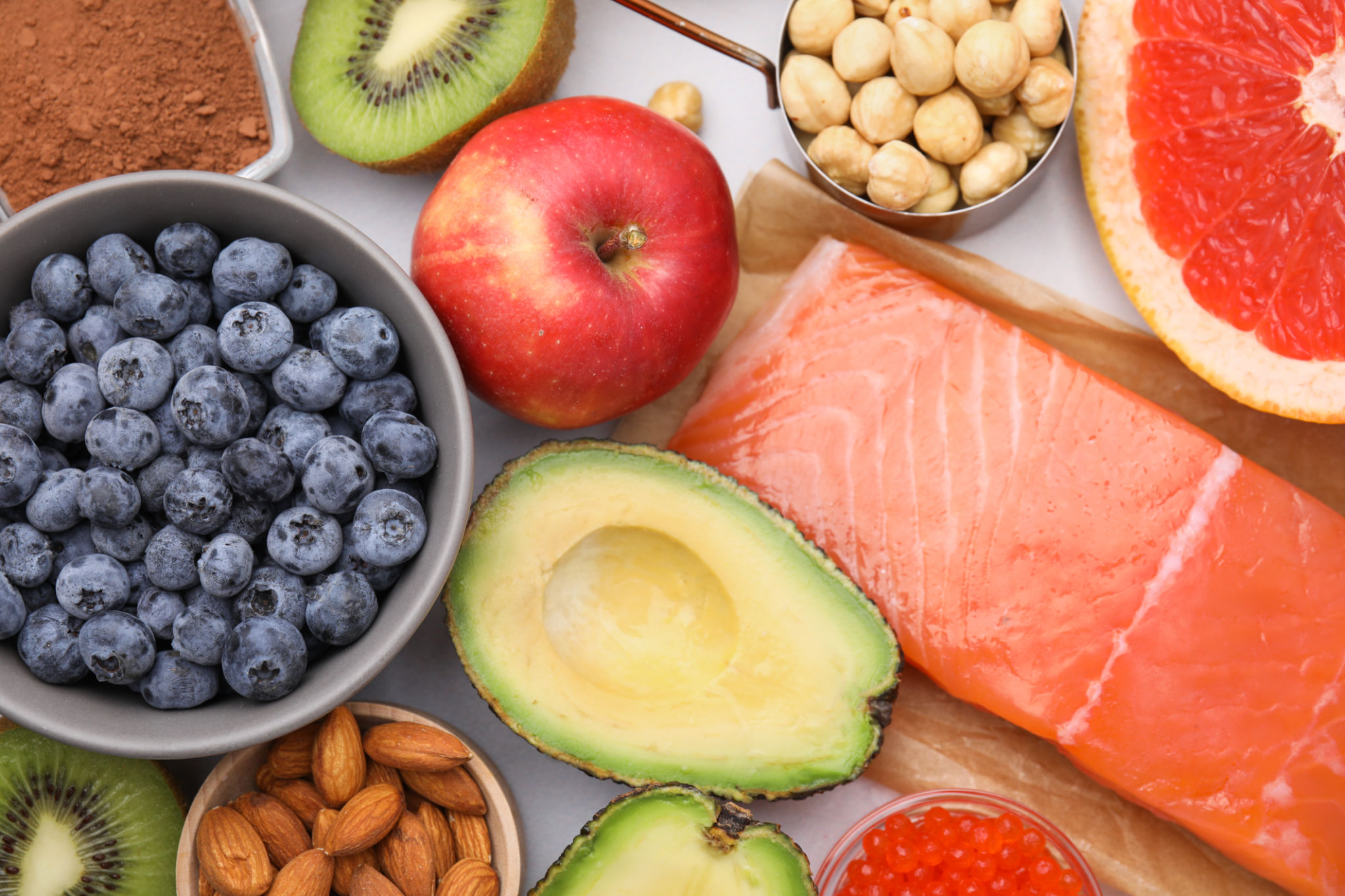How to Lose Weight - The Methods To Lose Body Fat For Good
az
I promise If you follow what's stated in this blog and watch my FREE video at the end of it explaining in detail how to lose 50lbs then you will forever know how to lose weight.
At that point, it just becomes about consistency.
Maintaining a healthy weight is essential for overall well-being. Excess body weight can increase the risk of numerous health problems, including heart disease, diabetes, and certain types of cancer. Learning how to lose weight can also boost energy levels, improve sleep quality, and enhance self-confidence. In this article, we'll explore effective strategies for losing weight, including creating a calorie deficit, strength training, cardiovascular exercise, high-intensity interval training (HIIT), nutrition, and tracking progress, and staying motivated. Whether you're looking to drop a few pounds or make a significant lifestyle change, these tips and techniques can help you achieve your weight loss goals.
Creating a calorie deficit

To lose weight, you need to create a calorie deficit, which means consuming fewer calories than your body burns each day. This forces your body to use stored fat as energy, resulting in weight loss over time. Creating a calorie deficit can be achieved through a combination of diet and exercise. Some tips for creating a calorie deficit include tracking your daily calorie intake, increasing physical activity levels, and choosing nutrient-dense, low-calorie foods. The benefits of a calorie deficit for weight loss include improved body composition, increased energy levels, and reduced risk of chronic diseases such as diabetes and heart disease.
why strength training is important for weight loss

Builds lean muscle mass:
Strength training is important for weight loss because it helps build lean muscle mass. Lean muscle mass refers to the muscles in your body that are not covered by fat. Building more lean muscle mass can help you burn more calories at rest because muscle tissue requires more energy to maintain than fat tissue. This means that even when you're not working out, your body will be burning more calories if you have more muscle mass.
Increases metabolism:
Strength training can also increase your metabolism, which is the rate at which your body burns calories. This happens because strength training creates micro-tears in your muscle fibers, and your body needs to repair these tears by using energy. This process is known as excess post-exercise oxygen consumption (EPOC) and can increase your metabolism for up to 72 hours after a workout.
Improves body composition:
Strength training can also improve your body composition by reducing body fat and increasing muscle mass. This is important for weight loss because muscle tissue weighs more than fat tissue, so as you gain muscle and lose fat, you may not see a significant change in your weight, but you will notice changes in your body shape and size. Improving your body composition can also improve your overall health and reduce your risk of chronic diseases such as diabetes and heart disease.
Examples of strength training exercises that can help with weight loss:
1. Squats
2. Lunges
3. Deadlifts
4. Bench press
5. Shoulder press
6. Rows
7. Pull-ups
8. Push-ups
Tips for incorporating strength training into a workout routine
1. Start with lighter weights and focus on proper form if you are new to working out. But make sure you still get a challenge from the weight as well. You want to be able to do 12 reps at first and by the end of the twelfth rep it should be challenging.
2. Increase weight gradually over time and add strength sets. This is a form of progressive overload.
3. Aim for at least 2-3 strength training sessions per week when you are able to.
4. Mix up your routine to prevent boredom.
5. Incorporate compound exercises that work for multiple muscle groups.
6. Don't forget to warm up and cool down before and after each workout.
Strength training is an essential component of any weight loss program. In addition to burning calories during exercise, strength training helps build lean muscle mass, which increases metabolism and burns more calories at rest.
Some effective strength training exercises for weight loss include squats, lunges, deadlifts, bench press, shoulder press, rows, pull-ups, and push-ups.
When incorporating strength training into a workout routine, it's important to start with lighter weights and focus on proper form, gradually increasing weight over time.
Aim for at least 2-3 strength training sessions per week, and mix up your routine to prevent boredom and plateauing. Incorporate compound exercises that work for multiple muscle groups, and don't forget to warm up and cool down before and after each workout.
Start your journey today by becoming primed with the code PRIMEPACK20 for 20% off your first purchase and a 7-day free trial! Click here to get started!
Cardiovascular Exercise for Weight Loss

Burns calories and fat:
Cardiovascular exercise, also known as cardio, is a great way to burn calories and fat. During cardio exercises, your heart rate increases, and your body starts to use stored fat and glucose for energy. This leads to an increase in calorie burn, which can lead to weight loss over time. In addition, cardiovascular exercise can help you maintain a calorie deficit, which is essential for weight loss.
Improves heart health:
Cardiovascular exercise is also important for heart health. It can help lower blood pressure, reduce bad cholesterol levels, and improve circulation. Regular cardio exercise can also reduce your risk of developing heart disease, stroke, and other cardiovascular diseases.
Boosts energy levels:
Cardiovascular exercise is an effective way to boost your energy levels. When you engage in cardio exercises, your body releases endorphins, which are natural chemicals that promote feelings of happiness and well-being. This can help you feel more energized and motivated throughout the day.
Reduces stress and anxiety:
Cardiovascular exercise can also help reduce stress and anxiety. When you exercise, your body releases endorphins, which can help reduce feelings of stress and anxiety. Additionally, cardiovascular exercise can help you improve your sleep quality, which can also help reduce stress and anxiety levels.
Examples of cardiovascular exercises for weight loss
1. Running or jogging
2. Cycling
3. Swimming
4. HIIT workouts (but actual hit workouts, see points further below)
5. Rowing
6. Stair climbing
7. Dancing
Tips for incorporating cardiovascular exercise into a workout routine
1. Choose activities that you enjoy
2. Start with shorter durations and gradually increase intensity and duration
3. Incorporate interval training for maximum calorie burn
4. Mix up your routine to prevent boredom and plateauing
5. Consider joining a group fitness class or working out with a friend for accountability and motivation.
Cardiovascular exercise is an excellent way to burn calories and fat, while improving heart health, and energy levels, and reducing stress and anxiety.
Some examples of cardiovascular exercises for weight loss include running or jogging, cycling, swimming, HIIT workouts, rowing, stair climbing, and dancing.
When incorporating cardiovascular exercise into a workout routine, it's important to choose activities that you enjoy, starts with shorter durations and gradually increase intensity and duration, incorporate interval training for maximum calorie burn, mix up your routine to prevent boredom and plateauing, and consider joining a group fitness class or working out with a friend for accountability and motivation.
High-Intensity Interval Training (HIIT)

Definition of HIIT:
HIIT stands for High-Intensity Interval Training. It's a workout style that alternates between short, intense bursts of exercise and periods of rest or low-intensity exercise. The goal is to push your body to its limit during the intense intervals and then recover during the rest periods.
How HIIT helps burn more calories in a shorter amount of time:
HIIT is effective for weight loss because it's a form of cardiovascular exercise that can burn a lot of calories in a short amount of time. The high-intensity intervals challenge your body to work harder and burn more calories than it would during steady-state cardio exercises like jogging or cycling.
Benefits of HIIT for weight loss and overall health:
In addition to burning calories and fat, HIIT has other benefits for weight loss and overall health. It can improve cardiovascular health, increase muscle strength and endurance, and improve insulin sensitivity. It can also lead to increased fat oxidation and improved metabolic function. Additionally, HIIT workouts can be done anywhere with little or no equipment, making it a convenient and accessible option for many people.
Examples of HIIT workouts
1. Tabata intervals
2. 30-second sprint intervals
3. Bodyweight circuit training
4. Plyometric exercises
5. High-intensity cardio exercises
High-Intensity Interval Training (HIIT) is a type of exercise that involves short bursts of intense activity followed by periods of rest or recovery.
HIIT is effective for weight loss because it helps burn more calories in a shorter amount of time, and it has several other benefits for overall health.
Examples of HIIT workouts include Tabata intervals, 30-second sprint intervals, bodyweight circuit training, plyometric exercises, and high-intensity cardio exercises.
When incorporating HIIT into a workout routine, it's important to start with shorter intervals and gradually increase intensity and duration, combine HIIT with strength training or cardiovascular exercise, mix up your HIIT routine to prevent boredom, and consult with a fitness professional if you're new to exercise or have any medical conditions.
Nutrition for Weight Loss

Importance of a balanced diet for weight loss and overall health: A balanced diet is essential for weight loss as well as overall health. Eating a variety of foods from all food groups provides the necessary nutrients that support weight loss and keep the body healthy.
What different macronutrients (carbohydrates, proteins, and fats) affect weight loss:
Different macronutrients have different effects on weight loss. Carbohydrates are the body's main source of energy, and it's important to consume complex carbs that are high in fiber and have a lower glycemic index. Proteins help build and repair muscle tissue, which in turn helps increase metabolism and burn more calories. Healthy fats such as monounsaturated and polyunsaturated fats can help reduce inflammation and improve heart health. It's important to consume a balance of all three macronutrients for weight loss and overall health.
How to calculate and adjust calorie intake for weight loss:
To lose weight, it's necessary to create a calorie deficit. This means consuming fewer calories than the body burns. To calculate the number of calories needed for weight loss, one can use online calculators that take into account factors such as age, gender, height, weight, and activity level. It's important to adjust calorie intake based on progress and reassess every few weeks to ensure continued weight loss. It's also important to note that cutting calories too drastically can lead to nutrient deficiencies and slow down metabolism, so it's important to aim for a moderate calorie deficit.
Tips for making healthy food choices
Incorporating more fruits and vegetables into your diet:
Fruits and vegetables are low in calories and high in fiber, which helps you feel fuller for longer. Aim to include a variety of colors and types of produce in your diet to ensure you're getting a range of nutrients. Consider adding fruits and vegetables to your breakfast smoothie, having a salad with lunch or dinner, or having sliced fruit as a snack.
Choosing lean protein sources:
Protein is essential for building and repairing muscle, which is important for weight loss. However, some protein sources are high in saturated fat and calories. Opt for lean protein sources such as chicken, turkey, fish, tofu, legumes, and low-fat dairy products. These options are also typically more filling than processed protein sources like deli meats.
Limiting processed foods: Processed foods are often high in calories, unhealthy fats, and added sugars. These foods can contribute to weight gain and can be less filling than whole foods. Try to limit your intake of processed foods such as sugary snacks, chips, and fast food. Instead, choose whole foods like fruits, vegetables, whole grains, and lean proteins.
Drinking enough water:
Drinking enough water is important for weight loss because it helps to keep you hydrated and can help you feel fuller, reducing the chances of overeating. Aim to drink at least 8-10 glasses of water per day. You can also try flavoring your water with citrus, cucumber, or other fruits for added taste.
Meal planning and preparation tips:
Planning and preparing your meals in advance can help you make healthier choices and avoid last-minute fast food options. Consider making a grocery list and planning your meals for the week ahead of time. You can also batch cook meals and portion them out for the week, or prepare ingredients in advance to make cooking faster and easier. Additionally, having healthy snacks on hand can help prevent overeating and keep you satisfied between meals.
Start your journey today by becoming primed with the code PRIMEPACK20 for 20% off your first purchase and a 7-day free trial! Click here to get started!
Common diet mistakes to avoid
1. Extreme calorie restriction or fad diets
2. Skipping meals or cutting out entire food groups
3. Over-reliance on supplements or weight loss products
4. Not tracking food intake or portion sizes
5. Eating too much or too little for your individual needs.
Nutrition plays a crucial role in weight loss, and making healthy food choices is essential for success.
A balanced diet that includes a variety of fruits and vegetables, lean proteins, and healthy fats is important for weight loss and overall health.
It's also important to calculate and adjust calorie intake for weight loss based on individual needs.
Tips for making healthy food choices include incorporating more fruits and vegetables into your diet, choosing lean protein sources, limiting processed foods, drinking enough water, and meal planning and preparation.
Common diet mistakes to avoid include extreme calorie restriction or fad diets, skipping meals or cutting out entire food groups, over-reliance on supplements or weight loss products, not tracking food intake or portion sizes, and eating too much or too little for your individual needs.
Tracking Progress and Staying Motivated

Tracking progress and staying motivated are two key factors that can greatly impact the success of a weight loss journey. This is why I always get new clients to sign up for my app so they can see their metrics. Here are some points to further explain their importance:
Tracking progress:
Tracking progress can help you stay accountable and on track with your weight loss goals. When you see progress, even if it's small, it can help you stay motivated and committed to your plan. It can also help you identify areas where you may need to make adjustments in your diet or exercise routine to continue making progress. Tracking progress can be done in many ways, such as weighing yourself regularly, taking measurements, tracking your food intake, or keeping a workout log. Even using an app like our Become Primed app out clients can easily show you your weight loss journey with our built-in weight loss tracker.
Staying motivated:
Staying motivated is crucial for overcoming obstacles and maintaining progress. Losing weight can be challenging, and it's easy to get discouraged when you don't see immediate results or when you face setbacks. Staying motivated can help you push through these challenges and continue working towards your goals. Some ways to stay motivated include setting achievable goals, rewarding yourself for progress, finding a workout buddy, and reminding yourself of the reasons why you started your weight loss journey in the first place.
Examples of ways to track progress and stay motivated
1. Keeping a food and exercise journal
2. Taking progress photos and measurements
3. Setting achievable goals and rewarding yourself for milestones
4. Finding an accountability partner or support group
Tips for overcoming obstacles and staying committed to weight loss goals
1. Preparing for potential setbacks and obstacles
2. Finding healthy ways to cope with stress and emotions
3. Incorporating enjoyable physical activities into your routine
4. Focusing on progress rather than perfection
5. Maintaining a positive attitude and celebrating successes.
Tracking progress and staying motivated is important for long-term weight loss success.
Tracking progress can help you stay on track with your goals and identify areas for improvement.
Staying motivated can help overcome obstacles and maintain progress.
Ways to track progress and stay motivated include keeping a food and exercise journal, taking progress photos and measurements, setting achievable goals rewarding yourself for milestones, and finding an accountability partner or support group.
Tips for overcoming obstacles and staying committed to weight loss goals include preparing for potential setbacks and obstacles, finding healthy ways to cope with stress and emotions, incorporating enjoyable physical activities into your routine, focusing on progress rather than perfection, and maintaining a positive attitude, and celebrating successes.
Conclusion
In conclusion, weight loss can be achieved through creating a calorie deficit, incorporating strength training and cardiovascular exercise, adding HIIT workouts to a routine, making healthy food choices, tracking progress, and staying motivated.
While it can be challenging, the benefits to overall health and well-being are worth it.
Remember to consult with a healthcare professional before starting a weight loss program and to find a routine and plan that works for you. Start or continue your weight loss journey with small, sustainable steps and a positive attitude.
And as promised here is my Youtube video also giving you even more detail on how to lose 50lbs.
If you follow what advice is given in the video and continue to do it over time. you will without a doubt lose 50lbs of body weight.
But you MUST stay consistent.
And also
for a limited time,
Start your journey today by becoming primed with the code PRIMEPACK20 for 20% off your first purchase and a 7-day free trial.
Click here to get started now.
We only move forward, never backward.
We only create results, not excuses.
Don’t wait for the perfect moment—start building your best self today. Download the Become Primed app here
https://becomeprimed.com/programs
and take the first step toward becoming the strongest, healthiest, and most confident version of yourself. Your prime is waiting!
